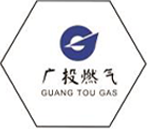
Nov . 21, 2024 17:51
Back to list
صمام منظم ضغط الغاز
Understanding Gas Pressure Regulators A Comprehensive Overview
Gas pressure regulators are essential devices used in various industries and applications to control and maintain a steady flow of gas. Their primary function is to reduce and regulate the pressure of gas from a storage tank or supply source to a predetermined level suitable for utilization in various equipment and processes. This article delves into the working principles, types, applications, and maintenance of gas pressure regulators, highlighting their importance across different sectors.
Working Principle
At its core, a gas pressure regulator functions by balancing the pressure between the high-pressure inlet and the low-pressure outlet. The main components of a pressure regulator include an inlet, outlet, diaphragm, and a spring mechanism. When gas enters the regulator, it exerts pressure on the diaphragm. The spring then compresses or expands in response to this pressure to maintain a constant outlet pressure.
As the demand for gas fluctuates, the regulator automatically adjusts to changes. If the outlet pressure rises above the set point, the diaphragm moves to close the gas flow, preventing further pressure increase. Conversely, if the pressure drops, the diaphragm allows more gas to flow in, thus stabilizing the pressure. This automatic response is crucial for ensuring the safe and efficient use of gases in various applications.
Types of Gas Pressure Regulators
Gas pressure regulators come in different types, categorized primarily by their design and application
1. Single-Stage Regulators These are often used in low-pressure applications where only a small pressure drop is required. Their straightforward design makes them easy to install and maintain.
2. Two-Stage Regulators More commonly used in high-pressure systems, these regulators provide more precise control of outlet pressure. The two-stage design allows for a high degree of stability, even when there are fluctuations in inlet pressure.
3. Back Pressure Regulators These regulators maintain a set pressure upstream, allowing for precise control of pressure levels within a system, such as in gas distribution networks.
4. Electronic Pressure Regulators With advancements in technology, electronic regulators have been developed to offer enhanced accuracy and control. These regulators can automatically adjust the pressure based on real-time data, making them ideal for complex systems.
.
Gas pressure regulators are utilized in a multitude of sectors including
صمام منظم ضغط الغاز

- Industrial Manufacturing They are crucial in processes that involve the combustion of gases, such as in furnaces, kilns, and other heating applications.
- Household Systems Gas pressure regulators are integral components of home appliances such as gas stoves, water heaters, and heating systems, ensuring safe operation by maintaining the correct gas pressure.
- Medical Applications In hospitals, gas regulators are vital for managing the supply of medical gases like oxygen, ensuring that patients receive the correct dosage without risk.
- Energy Distribution In the natural gas industry, regulators are used in the distribution of gas to homes and businesses, maintaining safe and efficient pressure levels.
Maintenance
Regular maintenance of gas pressure regulators is essential to ensure their longevity and reliability. Here are some maintenance tips
- Routine Inspection Regularly check for any leaks or signs of wear and tear. Any irregularities should prompt immediate attention to prevent safety hazards.
- Calibration Periodically calibrate the regulator to ensure that it is maintaining the correct pressure levels. This is particularly important in sensitive applications like medical and industrial processes.
- Cleaning Dust and debris can accumulate on regulators, potentially affecting their function. Keeping them clean and free from obstructions will help maintain optimal performance.
- Replacement If a regulator shows significant signs of wear or if it fails to maintain the desired pressure, it should be replaced promptly to avoid system failures.
Conclusion
Gas pressure regulators play a vital role in various applications across numerous industries. By regulating gas pressure, they ensure the safety and efficiency of equipment and processes. Understanding their function, types, and maintenance is essential for anyone working with gas systems, whether in industrial settings, domestic households, or medical facilities. As technology continues to evolve, the future of gas pressure regulation looks promising, with innovations aimed at enhancing accuracy and efficiency further solidifying their indispensable role in modern society.
Next:
Latest news
-
Safety Valve Spring-Loaded Design Overpressure ProtectionNewsJul.25,2025
-
Precision Voltage Regulator AC5 Accuracy Grade PerformanceNewsJul.25,2025
-
Natural Gas Pressure Regulating Skid Industrial Pipeline ApplicationsNewsJul.25,2025
-
Natural Gas Filter Stainless Steel Mesh Element DesignNewsJul.25,2025
-
Gas Pressure Regulator Valve Direct-Acting Spring-Loaded DesignNewsJul.25,2025
-
Decompression Equipment Multi-Stage Heat Exchange System DesignNewsJul.25,2025

